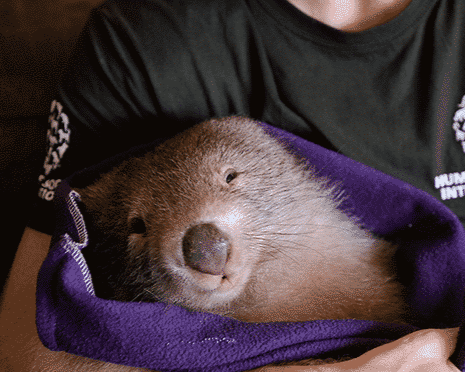Australia’s native animals are protected by law — but that protection comes with caveats. Across every state and territory, permits are routinely issued that allow property owners to kill native wildlife. Known in many jurisdictions as “damage mitigation permits,” these licences have quietly sanctioned the deaths of millions of animals...
Historic votes have been passed in council chambers across greater Sydney calling time on the outdated shark nets that have been needlessly killing marine wildlife for the past 80 years, with no benefit to public safety.
In recent weeks Randwick, Waverley, Wollongong, Newcastle and the Northern Beaches councils have all passed motions to submit to a NSW Department of Primary Industries (DPI) survey, a request that shark nets no longer be used on beaches in those local government areas. Their requests cover 32 of the 51 netted beaches, 63% of all shark nets in NSW, and well known stretches of sand like Bondi, Coogee, Manly, Austimer and Stockton.
Such strong community opposition to the shark nets is certainly cause for celebration. But what happens now?
The Department of Primary Industries is deciding how to move forward managing the risk of shark bite for NSW ocean users. DPI has said the wishes of local communities will be important to guide decisions.
DPI has done great work over the past 5 years trialling new technologies to keep both swimmers and marine life safe on NSW beaches. The public can feel confident that replacing the shark nets with the modern technology DPI has developed will be a massive boost to public safety. The risk of shark bite is incredibly low, and where the crude shark nets did not do anything to reduce that small risk, new technologies available today are much more effective at doing so.
Drone surveillance is the most advanced shark detection system we’ve ever had. Drones can be flown up and down the beach providing surf lifesavers an eye in the sky with nearly complete coverage of the survey area. If a potentially dangerous animal is spotted, alarms can be sounded and the water quickly cleared. Drones can also address the much greater risk at the beach of drowning, by identifying swimmers in distress and can even be fitted to drop personal floatation devices. For these reasons, drones are quickly becoming standard components in the beach safety toolkit.
SMART drumlines (standing for Shark Management Alert in Real Time – SDLs) are effective non-lethal capture and relocation systems. Though concerns remain over the welfare of animals caught on SDLs, they are much better at targeting sharks than the nets and are designed to relocate them offshore rather than to kill them. During trials, SDLs caught far fewer non-target wildlife (217) than nets (2,228) over the same time period, and far more (499 vs 171) target sharks. Most impressively, SDLs killed less than 1% of animals caught, whereas nets killed 55%.

More cutting edge technologies to reduce the risk of shark bite are being developed every day. Personal shark deterrents emit an electrical field, reliably reducing interactions. The Shark Safe Barrier is a South African design using a physical barrier in the form of anchored, floating PVC pipe, mimicking kelp, and a magnetic field emanating from the pipes creating a wildlife safe barrier that large sharks will not cross.
DPI’s own social surveys repeatedly confirm that shark nets are the least preferred of DPI’s options for managing the risk of shark bite. Our own public surveys say the same. On the Northern Beaches, 60% of residents called for the removal of the nets, 72% wanted nets replaced with SMART drumlines, and 80% polled for more drone surveillance. Coastal communities, and now the councils have spoken.
At the Northern Beaches meeting I sat in on, there was actually no debating and the vote was unanimous – as it was in Wollongong as well. Newcastle’s vote passed 11 to 1. Councillor after councillor of all political stripes stood up and overwhelmingly supported the removal of the nets. They said it was a “No Brainer”. Councillors based their votes on two main points:
- Shark nets provide a false sense of security and do not reduce the risk of shark bite. There have been 34 shark/human interactions at netted beaches in NSW[1], and 40% of sharks are caught on the inside, or the beach-side of the nets[2].
- Shark nets kill marine wildlife. It is estimated that NSW shark nets have killed 19,000 animals in their 80 years of operation. Since formal reporting of the program began in 2012, the SMP has caught nearly 3000 animals, killing over 1600 including turtles, dolphins, rays, sharks, and occasionally even whales.
The most common concern regarding the removal of shark nets is that the general public like to feel that something is in the water protecting them. And while the shark nets provided only a false sense of security, the available alternatives of drones and SDLs can actually reduce the risk.
For too long the death knell has sounded for hundreds of marine animals every year, but now, the death knell is ringing loud and clear for the archaic Shark Meshing Program. We look forward to NSW Fisheries Minister Marshall receiving a brief on his desk from his Department to say science and community support is overwhelming, and it’s time to retire the nets.
A marine ecologist specialising in conservation, research and outreach, Lawrence has spent years working with wildlife, the ocean and the public to engender sustainable relationships between them. He has worked as a field biologist, environmental consultant, naturalist and project coordinator with a BA from the University of San Diego, and an MSc from James Cook University. Lawrence’s work at HSI is currently focused on shark welfare and protection, specifically in regards to culling and control programs, overexploitation, and international protection.
References
1. https://www.sharksmart.nsw.gov.au/shark-nets
2. McPhee, D. 2012. Likely effectiveness of netting or other capture programs as a shark hazard mitigation strategy in Western Australia


